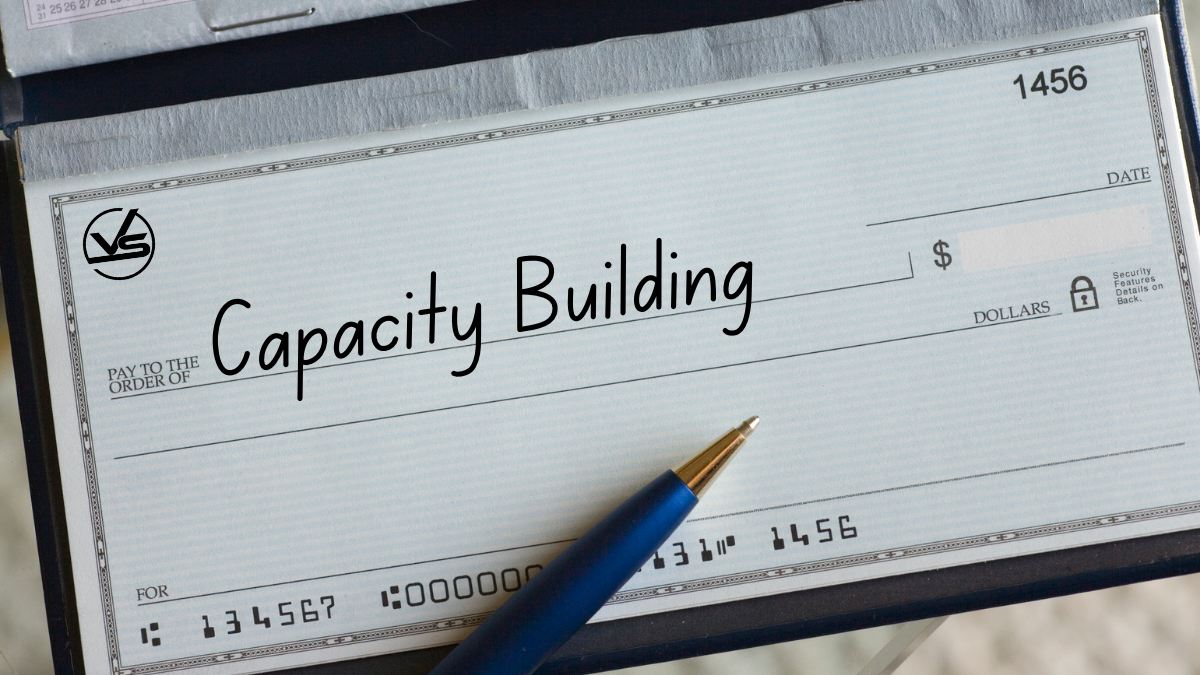
An In-Depth Look at Capacity Building for Nonprofits
If we were to ask you and other nonprofit leaders about some of your biggest challenges, odds are capacity building would be at the top of the list. (I serve on the board of directors of Community for Hope, a local nonprofit with a full-time staff of just ONE person!) Nonprofits like yours rely on the organization’s internal capacity to fulfill the mission and experience growth. Unfortunately, the options for getting grants and donations are limited, especially with the vast competition.
But there’s no reason to despair. The Council of Foundations published research noting that the funding capacity for U.S. nonprofits went from $555 million to more than $900 million from 2011 to 2015. That’s a sizeable increase in nonprofit donations, which is a good sign for organizations like yours seeking to enhance nonprofit capacity-building programs.
What Is Capacity Building?
Capacity building is the process of boosting your organization’s internal capacity to fulfill its mission.
How does an organization achieve that?
They need staff, resources, and other tools, depending on the organizational mission. Just because the executives aren't profiting from the revenue doesn't mean there aren't bills to pay. Nonprofits need to keep their lights on, too!
It’s a form of investment in the effectiveness of the organization to fulfill its mission, as well as the long-term sustainability of the organization. The more support and capacity the organization has, the more efficient they are in making a positive impact within the communities they serve.
Simply put, capacities are equivalent to the tools you’re working with as an organization. It outlines what you need to take your organization to the next level of financial, operational, and organizational effectiveness.
Why Is Capacity Building Important & What Challenges Do You Face?
Improving nonprofit capacity is directly linked to the organization’s survival. But to become successful in building capacity, you must overcome a few key obstacles.
Importance of Nonprofit Capacity Building
Building capacity for a nonprofit serves as the framework for achieving your organizational mission and serving your community. Here’s what makes it so important…
- It Gives You Tools for Success – Capacity building provides you with the tools to work with so that you can put your cause into action. These resources and tools empower you to act and make a greater impact on your community.
- It Boosts Your Productivity – A well-equipped nonprofit team is more effective. Employees are engaged, and volunteers are more committed. The more productive your organization is, the more foundations and donors are inclined to give because they see you making a difference with the work you are doing.
- It Enables Your Staff to Develop Competencies & Skills – Capacity building requires a concerted effort on the part of your team, with everyone having dedicated roles and responsibilities. It eliminates the need to hire additional staff, as each member of your organization has the proper training and can perform their job with maximum efficiency.
The Challenges Nonprofits Face
To generate resources for your organization, you need to bring in new donors and retain the existing ones. But without enough capacity, you won’t be able to attract donors to your organization (even when you streamline your efforts by implementing moves management).
That’s just scraping the surface, though. Here are some other challenges nonprofits face in their quest to improve capacity building.
- Grants Are Difficult to Attain – It’s hard to get support for the boring stuff, such as hiring staff and paying bills. And yet, nonprofit organizations can’t survive and grow without adequate capacity to cover these essentials.
- It’s a Big Investment – It’s difficult for small nonprofit organizations to receive grants or donations unless they host their own fundraisers. And as you well know, those fundraising events are very labor intensive!
- It Requires Consistency With Messaging – You need to showcase your story as an organization. What is it that you do, and why should a donor care? You need to create a story ask, but you must convey it in an effective way that appeals to your target donors.
Identifying these challenges is the first step in developing a successful strategy. It’s crucial that you understand your unique situation and needs so you can prepare for them accordingly.
How to Succeed With Capacity Building

What does it take to improve and succeed with your capacity-building efforts? The 2018 State of the Sector survey by the Nonprofit Finance Fund reveals that the challenges and issues for building capacity resonate within the nonprofit sector. Since many nonprofit leaders struggle to meet the demand for their services, improving capacity is the only viable solution.
So, how do you succeed with that effort? There’s no one-size-fits-all solution, but you can improve results using the following tips…
Know Your Needs
As a nonprofit leader, you can easily name the needs of the organization. But how well do your staff members understand the needs of your organization? What tools, training, and equipment does your staff need to be more effective?
The only way you can build a cohesive strategy is when you work as a cohesive unit. Every member of your team must be on the same page in defining your needs. It’s also important to involve your staff members, especially the ones who deal with the day-to-day operations of your organization. They can provide valuable insights and a wider perspective on your organizational needs that you might not be aware of.
Set up a time to discuss your needs with your staff or send out a survey. It’s crucial that you provide a platform for them to share their thoughts.
Evaluate Your Current Capacity
Aside from your needs, it’s also important that you understand your current capacities if you’re going to be able to plan for capacity building. Oftentimes, you’ll discover that your needs and capacities are connected. You can hit two birds at once when you closely inspect these areas side by side.
Make an account of your existing resources and tools. This includes evaluating the roles and responsibilities of each team member to find where your organization is currently facing bottlenecks in their workflow and where there might be opportunities to support them better.
This step will enable you to identify what issues or needs you can address with your current capacities. At the same time, it also helps you identify the most pressing issues so you can address them accordingly.
Commit for the Long Haul
Building your capacity does not happen overnight. Nonprofit staff members must be in it for the long haul. You need the full commitment of your team members if you wish to succeed at boosting your internal capacity.
For capacity building to improve, you must work on the competencies and skills of the staff members. Training and professional development programs are great ways to support your employees. This allows them to shift and grow as the organization grows too.
This process alone can take some time and commitment from your staff. Some nonprofits even take decades before they can see change come through for their organization.
Your ability to succeed in building internal capacity requires financial resources and enhanced collaborative capacity.
Diversify Your Fundraising Events
Nonprofit organizations have various donor and fundraising events to choose from to improve capacity. Donor acquisition and crowdfunding are on top of that list. You can also hold a gala to commemorate your loyal and major donors. That’s also a great opportunity to attract new donors and showcase what the current donors’ generosity has done for the organization and its cause.
For these events to succeed, a lot of planning and communication must take place across many channels, such as social media, email automation, print media, public relations, and CRM/databases. Make sure to designate a team to handle this aspect of nurturing your donors and enticing prospective donors.
Take a 3-Pronged Approach to Fundraising
Successful fundraising is crucial to capacity building. Use this three-step approach:
- It starts with expressing gratitude for your donors. Send thank-you notes to recognize your donors’ support and periodically communicate with them to bring them into the fold.
- The next step is stewardship. This is where you build a relationship with your donors by keeping them updated on your nonprofit activities. The goal is to demonstrate the difference that their donations are making and how that money is allocated or spent. This allows you to build trust, which helps generate donor loyalty.
- Finally, the last step is when you appeal for more donations. Many nonprofit organizations fail because they skip the first two steps and go directly to this part. However, you must build the trust of your donors first before you can make a call for donations.
Don’t Be an Island
Recently, I met with a local nonprofit executive director who had applied and been approved for $10k per month in Google Ad Grants! That’s a huge find; nonprofits should look into opportunities like these.
The problem, though, is this organization never even used a single dollar of the grant! Do you know why? Because they had no idea what to do or how to get started. It’s important to realize you aren’t alone in your efforts, and companies like Viral Solutions specialize in helping nonprofits succeed.
Final Thoughts
Capacity building is not a one-time effort. It is an ongoing process of continuous improvement that requires unyielding commitment from your staff members. It also involves refining your strategy to build a sustainable organization that can thrive.
If you need help creating an effective strategy, we offer a handy guide for nonprofits that you can use to host fundraisers effectively and attract more donors to help your cause. Download the Quick-Start Guide to Effective Fundraising for Nonprofits here!

